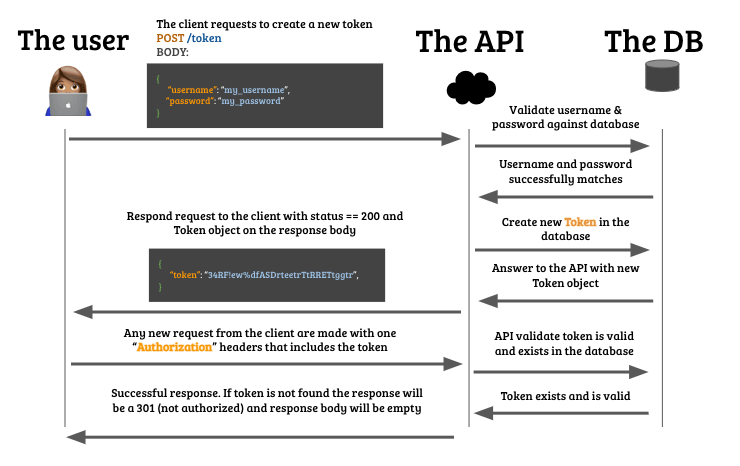Autenticacion de APIs con Json Web Tokens
Almost every API needs an authentication layer, and there are many ways to tackle that problem. Today we are going to be implementing JWT token into our Flask API.
How API Authentication works
You can divide a standard authentication process into 5 main steps:
- The user writes their username and password on your website.
- The username and password get sent to the backend API.
- The API looks for any record on the
Usertable that matches the username.- In many cases, the keys are usually encrypted when saving them, so it is necessary to use a specific method to validate it depending on the case.
- If a user is validated, it generates a
tokenfor that user and respondsstatus_code=200back to the front end. - The front-end will use that
tokenfrom now on to make any future request.

☝️ If you don't know what a token is, I would recommend this reading.
How to implement a JWT schema on my API with Flask?
In this article you will find the details about how to implement this schema on your Flask API